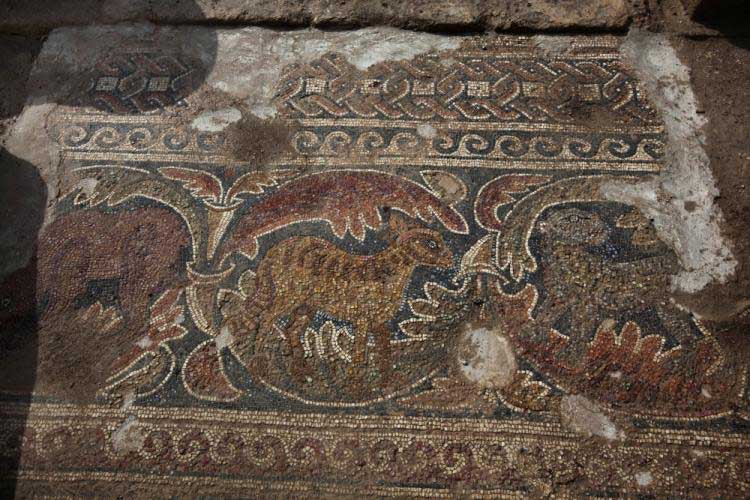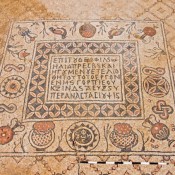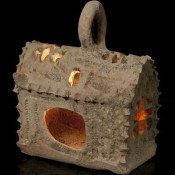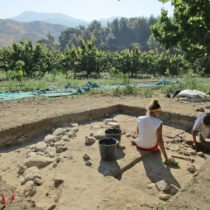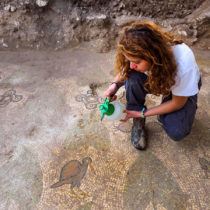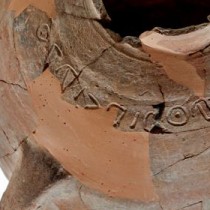In recent weeks the Israel Antiquities Authority uncovered a large impressive compound dating to the Byzantine period in Ramat Beit Shemesh which includes an oil press, a wine press and mosaics.
An archaeological survey conducted along the hills south of Beit Shemesh brought to light remarkable finds. During the survey blocked cisterns, a cave opening and the tops of several walls were visible on the surface. These clues to the world hidden underground resulted in an extensive archaeological excavation there that exposed prosperous life dating to the Byzantine period which was previously unknown.
The compound is surrounded by an outer wall and is divided in two regions: an industrial area and an activity and residential area. An unusually large well-preserved oil press was exposed in the industrial area. A large winepress revealed outside the built compound consisted of two treading floors from which the grape must flowed to a large collecting vat. The finds found during the excavation indicate that local residents were engaged in wine and olive oil production. The impressive size of the agricultural installations shows that these facilities were used for production on an industrial-scale rather than just for domestic use. In the residential section of the compound several rooms were exposed, some of which had mosaic floors. Part of a colorful mosaic was exposed in one room where there was apparently a staircase that led to a second floor which is not preserved. In the adjacent room another mosaic was found, adorned with a cluster of grapes surrounded by flowers set within a geometric frame. Two entire ovens used for baking were also revealed in the compound.
According to Irene Zilberbod and Tehila libman, excavation directors on behalf of the Israel Antiquities Authority, “We believe this is the site of a monastery from the Byzantine period. It is true we did not find a church at the site or an inscription or any other unequivocal evidence of religious worship; nevertheless, the impressive construction, the dating to the Byzantine period, the magnificent mosaic floors, window and roof tile artifacts, as well as the agricultural-industrial installations inside the dwelling compound are all known to us from numerous other contemporary monasteries. Thus it is possible to reconstruct a scenario in which monks resided in a monastery that they established, made their living from the agricultural installations and dwelled in the rooms and carried out their religious activities.
“At some point, which we date to the beginning of the Islamic period (7th century CE), the compound ceased to function and was subsequently occupied by new residents. These people changed the plan of the compound and adapted it for their needs”.
